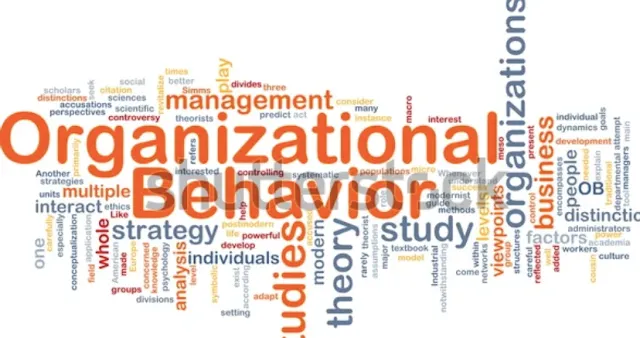In the dynamic landscape of modern business, understanding
organizational behavior is crucial for fostering a productive and harmonious
work environment. From motivating employees to enhancing communication
channels, the principles of organizational behavior delve into the intricacies
of human interaction within a workplace setting. Let's embark on a journey to
explore the essence of organizational behavior and uncover strategies to
optimize it for success.
What is Organizational Behavior?
Organizational behavior encompasses the study of how individuals, groups, and structures within an organization interact and influence one another. It delves into various aspects such as leadership dynamics, communication patterns, decision-making processes, and organizational culture. Essentially, it seeks to understand human behavior within the context of the workplace and its impact on organizational effectiveness.
Key Components of Organizational Behavior
1. Leadership Styles
Effective leadership is pivotal in shaping organizational
behavior. Different leadership styles, ranging from autocratic to democratic,
can profoundly impact employee motivation, job satisfaction, and overall
productivity. By adopting a transformational leadership approach, leaders can
inspire and empower their teams to achieve exceptional results.
2. Communication Channels
Clear and open communication is the lifeblood of any
organization. Establishing effective communication channels fosters
transparency, resolves conflicts, and facilitates collaboration among team
members. Whether through face-to-face interactions, emails, or digital
platforms, fostering a culture of communication cultivates trust and synergy
within the workforce.
3. Organizational Culture
Organizational culture defines the shared values, beliefs,
and norms that shape the behavior of individuals within an organization. A
positive organizational culture promotes innovation, employee engagement, and a
sense of belonging. By nurturing a culture of inclusivity and recognition,
organizations can attract top talent and retain their workforce effectively.
4. Motivation and Reward Systems
Motivated employees are the driving force behind
organizational success. Understanding the diverse needs and aspirations of
employees enables organizations to design tailored incentive programs and
reward systems. Whether through monetary incentives, recognition programs, or
opportunities for professional development, motivating employees fosters a
culture of high performance and achievement.
5. Decision-Making Processes
Effective decision-making lies at the heart of organizational behavior. By employing rational decision-making models and involving key stakeholders in the process, organizations can make informed choices that drive growth and innovation. Embracing a data-driven approach empowers organizations to mitigate risks and capitalize on opportunities in a rapidly evolving business landscape.
Strategies for Optimizing Organizational Behavior
1. Foster a Culture of Trust and Collaboration
Encourage open dialogue, mutual respect, and teamwork within
the organization. By promoting a collaborative environment where diverse
perspectives are valued, organizations can harness the collective intelligence
of their workforce and drive innovation.
2. Invest in Leadership Development
Provide ongoing leadership training and development programs
to cultivate effective leadership skills at all levels of the organization.
Empower leaders to lead by example, inspire their teams, and foster a culture
of accountability and continuous improvement.
3. Enhance Communication Channels
Implement technology-driven communication tools and platforms
to facilitate seamless communication and information sharing. Encourage
feedback loops, active listening, and transparency to ensure that communication
channels remain robust and effective.
4. Recognize and Reward Performance
Implement performance-based incentive programs and
recognition schemes to motivate employees and reinforce desired behaviors.
Celebrate individual and team achievements, and provide opportunities for
advancement and growth within the organization.
5. Embrace Diversity and Inclusion
Promote diversity and inclusion initiatives to create a more equitable and inclusive workplace culture. Embrace the unique perspectives and experiences of all employees, and strive to create a sense of belonging where everyone feels valued and respected.
Conclusion
In conclusion, organizational behavior serves as a
cornerstone for achieving organizational success in today's competitive
business landscape. By understanding the key components of organizational
behavior and implementing strategies to optimize it, organizations can foster a
culture of collaboration, innovation, and high performance. From effective
leadership and communication to motivation and diversity, investing in
organizational behavior yields tangible benefits that propel businesses towards
their goals. Embrace the power of organizational behavior, and unlock the full
potential of your workforce.



0 Comments